12 Garden Edging Ideas to Keep Your Plantings Neat and Protected
These beautiful border ideas will define your beds, contain mulch and dirt, and help protect your plants.
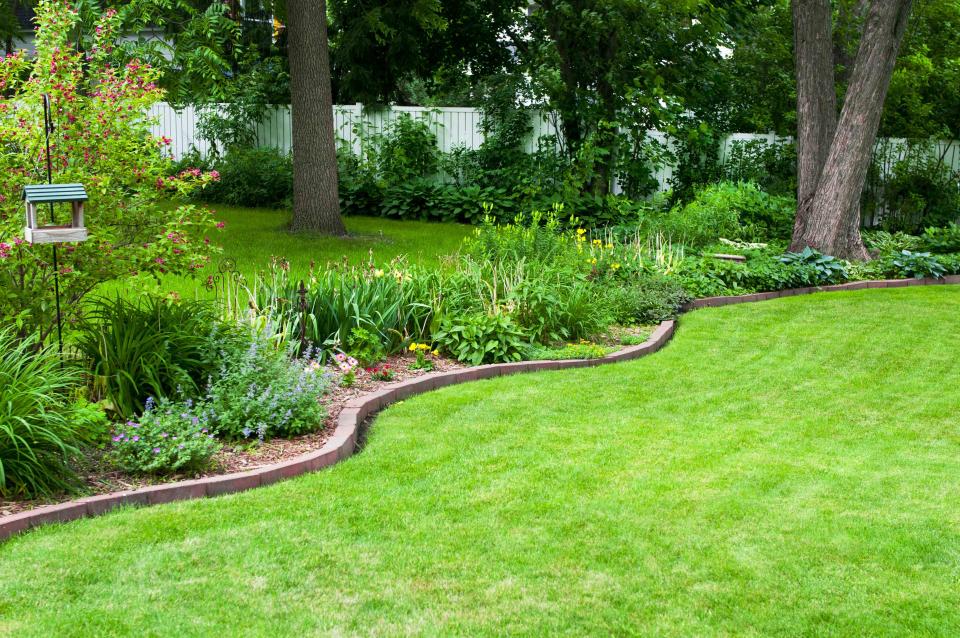
JenniferPhotographyImaging / Getty
While every landscape can benefit from the visual interest of defined edges, the type of border you install also plays a practical role in how your garden grows. And there are so many beautiful garden edging ideas to choose from. Tall metal or wood frames prevent container plantings from spreading throughout your yard; brick and stone protect plants growing alongside walkways from accidental foot traffic; paver edges can enclose loose dirt; and natural loose stone can improve drainage.
In need of some inspiration? Try one of these smart and stylish ideas, from natural edging and low-profile steel to tidy hedges and classic cobblestones. They are the perfect solution for highlighting and protecting your lawn and garden beds while keeping everything nice and tidy.
Meet Our Expert
Janice Parker, landscape architect at Janice Parker
Related: 16 Raised Flower Bed Ideas That Will Add Dimension to Your Garden
Choose Rustic Bricks
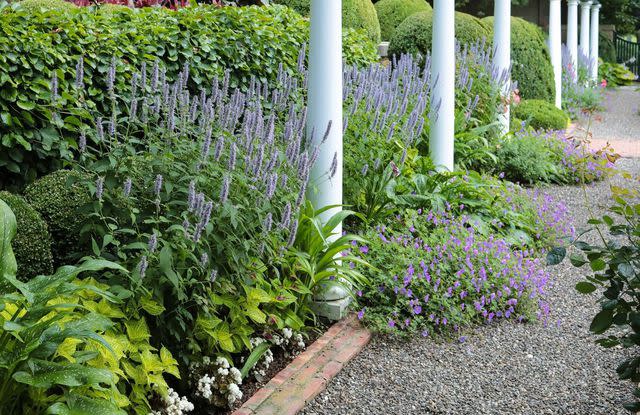
Neil Landino Jr. / Janice Parker Landscape Architects
Landscape architect Janice Parker calls classic brick her favorite type of garden edging for its warm color and simple installation. "This material looks good in any natural or formal setting, and there are endless patterns and rhythms that can be created with brick sizes and layouts," she says.
Related: 17 Garden Path Ideas That Perfectly Showcase Your Plantings
Opt for a Natural Edge

A Blade of Grass
The contrast between the rich soil of a flower bed and the lush green grass that meets it creates a natural garden edge. If you're edging your garden with a spade or half-moon edger, lay a wooden plank on the ground as a guide to keep your lines sharp and straight.
Related: An Easy Way to Edge a Lawn
Use Cobble Pavers
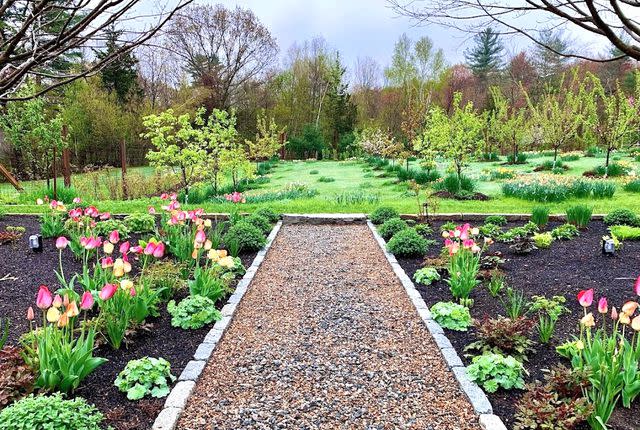
A Blade of Grass
Individual cobble pavers line a stone path, ending in a raised step, to divide this large garden. As the vibrant foliage and bright tulips expand to fill the space, the stones will continue to provide a neat border.
Plant Hedges for Living Borders
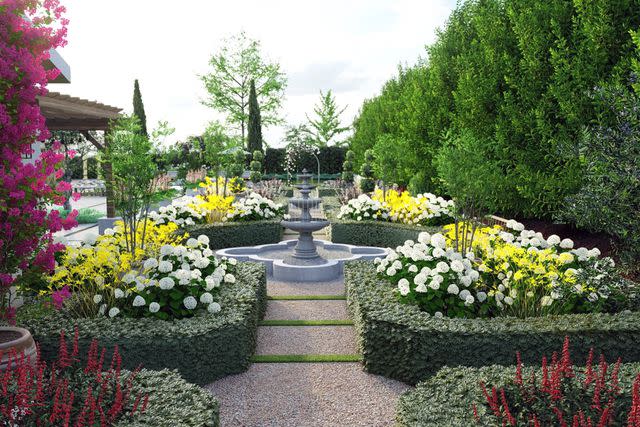
Yardzen
Compact hedges are a beautiful way to create borders for flower beds. Here, an orderly garden is anchored by a central fountain, and knee-high hedges enclose beds filled with soaring yellow and white blooms.
Mix Multiple Styles
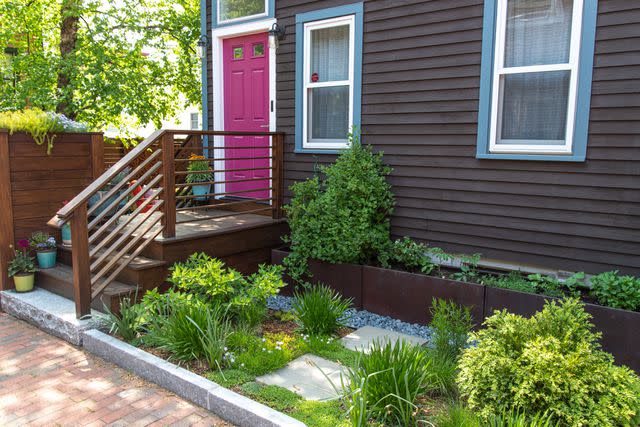
A Blade of Grass
Sleek metal edging creates a raised bed at the back of this garden to allow easy access to fresh herbs and vegetables, while low stone blocks prevent loose dirt from drifting onto the pathway. A line of loose stone improves drainage and provides a textural accent against the decorative greenery.
Go Big With Boulders
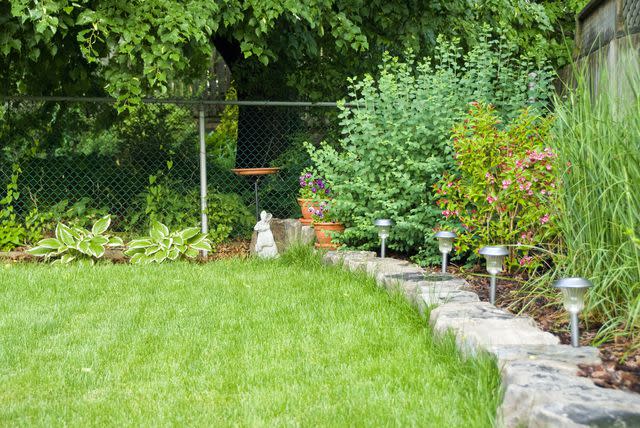
Chiyacat / Getty
Some edging is subtle, but you can also go big. Here, large boulders make a bold edge and create strong definition between the lawn and a bed for vertical plants.
Pair Wood With Stone
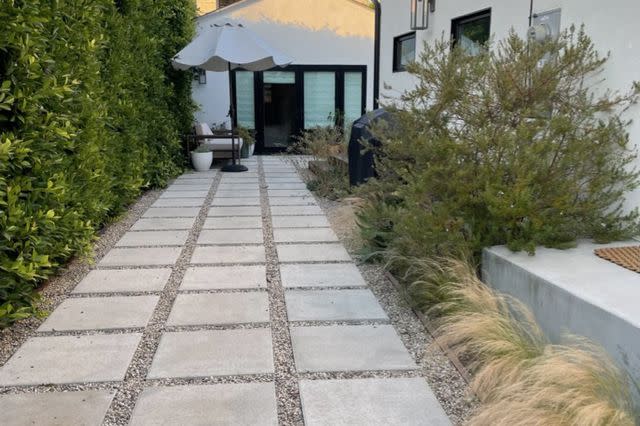
Yardzen
A border of thin planks can separate a narrow bed growing soft ornamental grasses from a paver-and-gravel walkway. The varied textures in the dense plantings provide an organic complement to the stones, pavers, and concrete in the space.
Add Decorative Containers
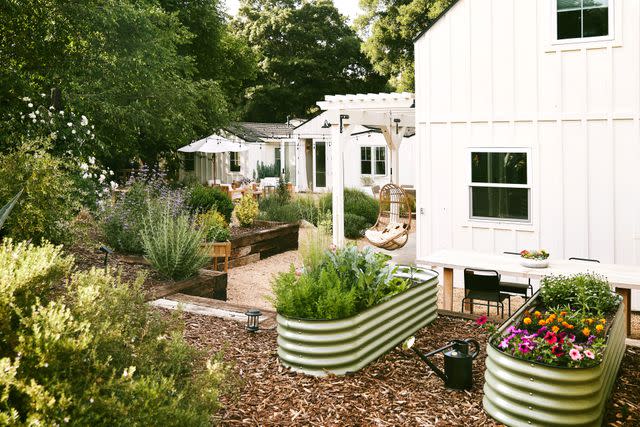
Yardzen
A multi-level yard calls for a combination of edging techniques. Stacked wood holds raised beds for flowers and shrubs, while creating steps that allow access to each area. Individual corrugated metal containers provide a border for flower and herb gardens.
Embrace Asymmetry
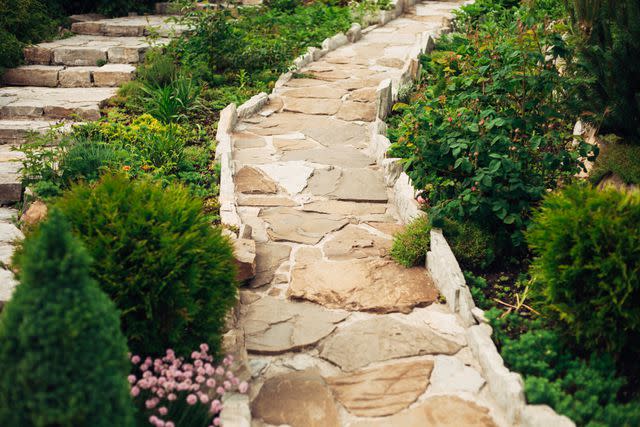
Anna Blazhuk/Getty Images
Asymmetrical stones create a visually-striking garden walkway, which is edged with similar stones—placed on-end—for a refined (but unfussy) edging.
Get Formal With Bricks
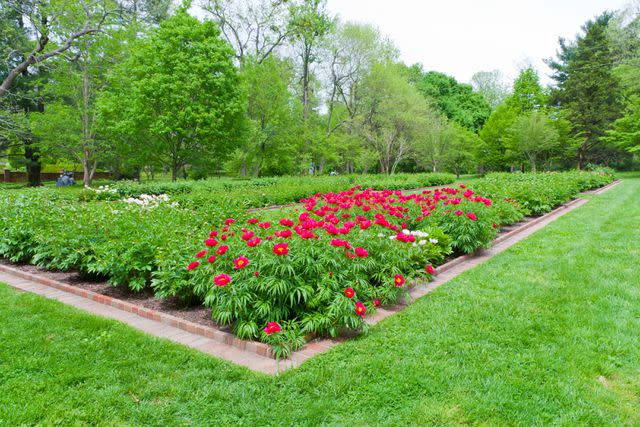
volgariver / Getty
While we love the cottage vibe of rustic brick or cobblestone, there's much to be said for going a bit formal with a more structural arrangement of bricks. Using two rows of brick, one horizontal and the other vertical, creates the perfect edge to highlight this expansive bed of peonies.
Choose Sturdy Stone
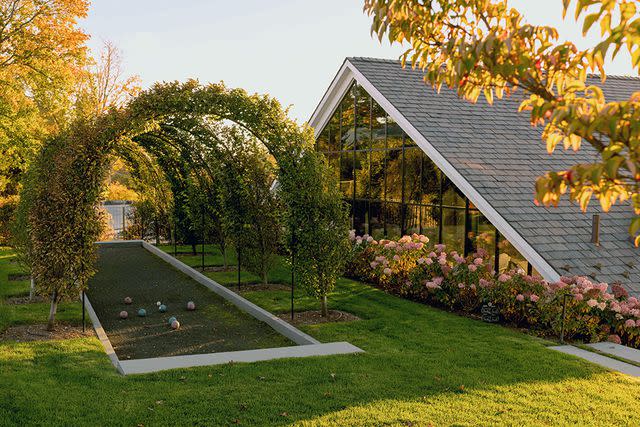
Neil Landino Jr. / Janice Parker Landscape Architects
Parker recommends stone edging for high-traffic areas, since it provides a sturdy boundary that doesn't compete with the landscape. "There is a common sense to stone in the landscape that contrasts poetically with the exuberance of flowers and plants," she says. "As an edge to a dining or sports area, it is indestructible and makes a strong defined space that holds you."
Add Subtle Steel
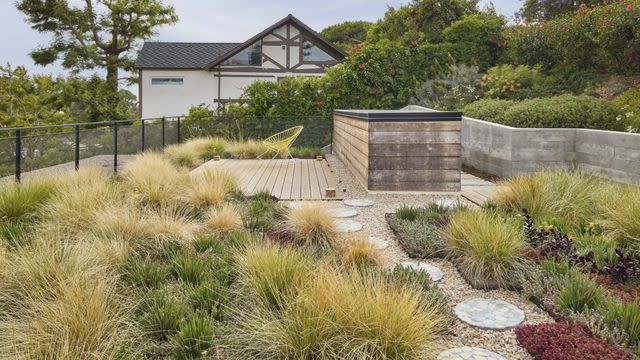
Farmscape
A low, steel edge keeps the loose stones of this walkway from encroaching into the neatly-defined garden beds; the darker color creates a contrasting outline that highlights the lighter hues of the plantings.
Related: 10 Best Plants to Grow Between Pavers in Your Yard
Read the original article on Martha Stewart.

